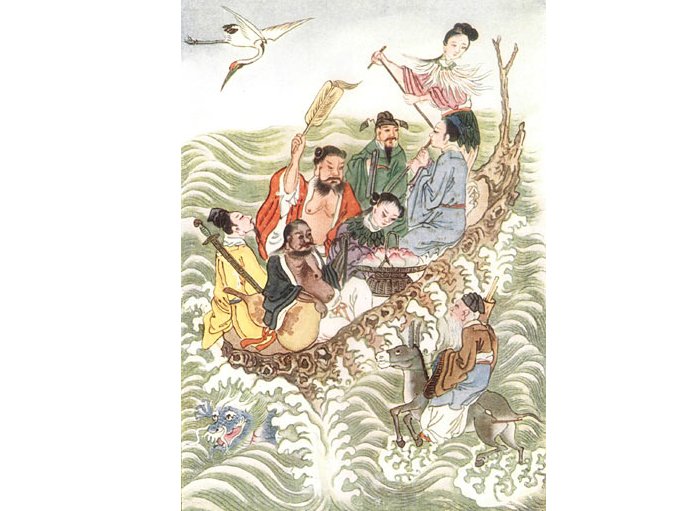Legend Of The Eight Immortals Who Know The Secrets Of Nature
Ellen Lloyd - AncientPages.com - The Eight Immortals in Chinese mythology are said to know the secrets of nature. These beings are regarded as super-humans who control all aspects of life. Each immortal's power can be transferred to an energy tool that can give life or destroy evil.
Together, these eight tools are called "Covert Eight Immortals."
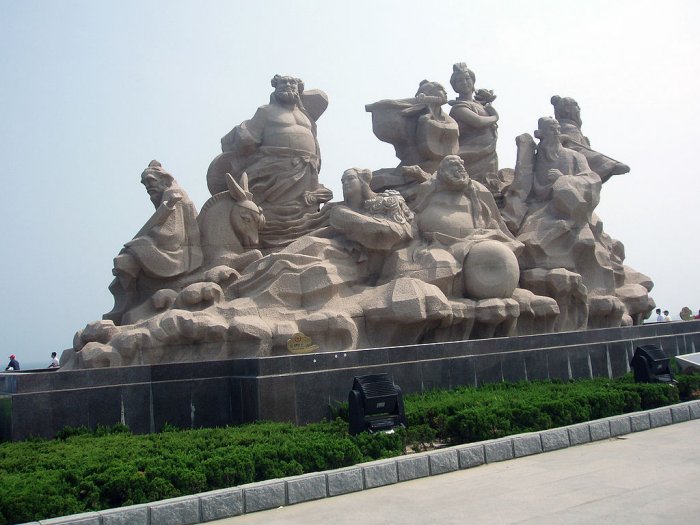 Statue of the Eight Immortals in Penglai City, Shandong. Public Domain
Statue of the Eight Immortals in Penglai City, Shandong. Public Domain
The Eight Immortals are a group of legendary "Xian" (spiritually or physically immortal, transcendent, super-human, celestial beings.) who are said to live on Penglai Mountain Island. These mythical beings have been part of Chinese oral history long before they were recorded in the works of writers of various dynasties, such as Tang, Song, Yuan, and Ming.
The Eight Immortals are considered to be signs of prosperity and longevity, so they are popular themes in ancient and medieval art.
Stories about the Eight Immortals and their achievements can be found in various literature and folk tales of China. The Xian is also pictured in art and depicted on different porcelain, bronze, ivory, and embroidered objects.
The Eight Immortals crossing the sea, from Myths and Legends of China. Werner, E. T. C. (1922) Myths & Legends of China, Category: New York: George G. Harrap & Co. Ltd. (Project Gutenberg eText 15250)
In Taoist legends, they are called the "Roaming Immortals." Two of the Eight Immortals are women. Each one of these enlightened individuals possesses a tool with special powers.
Chung-Li Chuan: The Discoverer Of The Elixir Of LifeChung-Li Chuan is credited with discovering the Elixir of Life, which is why he has become a symbol of longevity.
It is difficult to determine the true identity of Chung-Li Chuan because various sources contradict each other. Some ancient texts state his family name was Chung-li and that he lived in the Han dynasty. Another account describes Chung-Li Chuan as a vice-marshal in the service of Duke Chou Hsiao. He was defeated in battle and escaped to Chung-nan Shan, where he met the Five Heroes, the Flowers of the East, who instructed him in the doctrine of immortality.
The Elixir of life could cure the sick and revive the dead.
It is said Chung-Li Chuan discovered the Elixir of Life during a great famine when he amalgamated copper and pewter into silver with some mysterious drug. He later distributed the Elixir among people experiencing poverty, and thousands of lives were thus saved.
- Lan T'sai Ho: The Hermaphrodite And Patron Deity Of Florists
Lan T'sai Ho is believed to have been a woman and a hermaphrodite. They are portrayed as a youth, an aged man, or a girl. In more modern pictures, we recognize her as a young boy wearing a blue robe and carrying a basket of flowers.
The flower basket symbolizes life's transience and Lan T'sai Ho's ability to communicate with the gods.
3 Chang Kuo: Old Man With A Drum That Can Cure
The period assigned to Chang Kuo is the middle or close to the seventh to the middle of the eighth century A.D. He lived as a hermit in Chung-t'iao Shan, in the prefecture of P'ing-yang Fu in Shansi.
He is an older man usually seen mounted on his white mule, sometimes facing its head, sometimes its tail. He carries a phoenix feather or a peach of immortality.
His attribute is a drum made of a bamboo tube with two rods to strike it. The drum can cure life.
The Eight Immortals. Walters Art Museum - Public Domain
- Ho Hsien Ku: A Maiden Who Was A Symbol Of Family And Marriage
Ho Hsien Ku was a beautiful maiden with a magical lotus blossom. She is attributed to the lotus/ which can cultivate people through meditation.
When she was young, she found a stone called yün-mu shih, 'mother-of-pearl.' In a dream, she saw a spirit who ordered her to powder and eat one of these stones by which she could acquire agility and immortality. Occasionally, she is attributed with a peach, the divine fruit of Gods, associated with immortality, a musical instrument, or a spoon to dispense wisdom, meditation, and purity.
- Lü Tung-pin: A Scholar With A Magical Sword And Patron Deity Of Barbers
Lü Tung-pin was born in A.D. 798 at Yung-lo Hsien in the prefecture of Ho-chung Fu in Shans.
When he was 20 years old, he made a journey to Lu Shan in Kiangsi, where he met the Fire dragon, who presented him with a magic sword, which enabled him to hide in the heavens. He was skillful in fencing and is always represented with his magic Excalibur, Chan-yao Kuai, which he uses to slay demons and evil spirits.
This immortal symbolizes scholastic luck and protection and is the patron deity of barbers.
- Han Hsiang Tzu: A Happy Man And Patron Of Musicians
Han Hsiang Tzu is depicted as a happy man with a bouquet or a basket of peaches of immortality. He is a grand-nephew of Han Yü (A.D. 768-824), the great statesman, philosopher, and poet of the T'ang dynasty. Among his special skills was making flowers bloom instantaneously and smooth wild animals. His attribute is the flute, which can cause growth, and he is the patron deity of musicians.
- Ts'ao Kuo-chiu: The Immortal Who Signifies Fame And Recognition
Ts'ao Kuo-Chiu became one of the Eight Immortals because the other seven, who occupied seven of the eight grottos of the Upper Spheres, wished to see the eighth inhabited and nominated him because "his disposition resembled that of a genie."
He's generally depicted with castanets, a jade tablet of admission to court, and sometimes a feather fan. He is connected with the Sung Imperial family and signifies fame and recognition.
- Pa Hsien Kuo Hai: A Lame Beggar Carrying A Double Gourd
Pa Hsien Kuo Hai is a great magician who freed his soul from his body, aiding and meeting others in the celestial realm.
He was a handsome man who used his magical skills frequently. Once, while his spirit was gone from his body, a disciple decided that Li Tie Guai was dead and burned his body as tradition required. When Li Tie Guai's soul returned from its travels, he was forced to enter the body of a beggar. He is represented as a lame beggar carrying a double gourd. The gourd, symbolizing longevity and the ability to ward off evil, emanates a cloud. The gourd also symbolizes helping those in need and relieving the distressed.
Sometimes Li Tie Guai is pictured riding the qilin, a mystical hooved Chinese chimerical creature with the physical appearance of various animals like deer, horse, ox, and dragon.
Li Tie Guai is the emblem of the sick.
In modern China, the Eight Immortals are still a popular theme in artwork. Paintings, pottery, and statues are still typical in households across China and are gaining popularity worldwide.
Several movies about the Eight Immortals have been produced in China in recent years.
Written by Ellen Lloyd – AncientPages.com
Updated on January 21, 2024
Copyright © AncientPages.com All rights reserved. This material may not be published, broadcast, rewritten or redistributed in whole or part without the express written permission of AncientPages.com
More From Ancient Pages
-
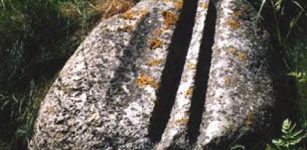 Mystery Of The Gotland Grooves – Ancient Astronomical Observatory?
Civilizations | May 11, 2016
Mystery Of The Gotland Grooves – Ancient Astronomical Observatory?
Civilizations | May 11, 2016 -
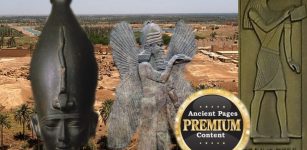 Surprising Ancient Secrets Of The ‘Second Thoth’ And God Osiris
Egyptian Mythology | Sep 27, 2018
Surprising Ancient Secrets Of The ‘Second Thoth’ And God Osiris
Egyptian Mythology | Sep 27, 2018 -
 Intriguing Ket People – The Last Nomadic Hunter-Gatherers Of Siberia
Featured Stories | Nov 23, 2023
Intriguing Ket People – The Last Nomadic Hunter-Gatherers Of Siberia
Featured Stories | Nov 23, 2023 -
 Genghis Khan Has 16 Million Relatives – You Could Be One Of Them
Ancient History Facts | Feb 3, 2018
Genghis Khan Has 16 Million Relatives – You Could Be One Of Them
Ancient History Facts | Feb 3, 2018 -
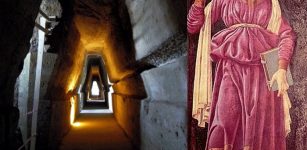 Mysterious Cave Of Prophetess Cumaean Sibyl – Ancient Portal To The Underworld
Featured Stories | Dec 25, 2017
Mysterious Cave Of Prophetess Cumaean Sibyl – Ancient Portal To The Underworld
Featured Stories | Dec 25, 2017 -
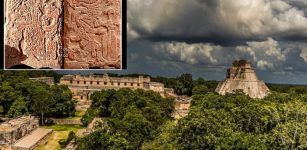 Ancient Maya Stela Carved On Both Sides Unearthed ‘In Situ’ In Uxmal, Yucatan Peninsula
Archaeology | Oct 31, 2022
Ancient Maya Stela Carved On Both Sides Unearthed ‘In Situ’ In Uxmal, Yucatan Peninsula
Archaeology | Oct 31, 2022 -
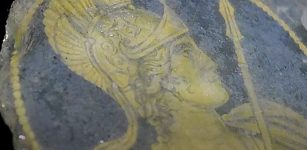 Extremely Rare Ancient Gold Glass With Goddess Roma Found During Subway Works In Rome
Archaeology | Feb 13, 2023
Extremely Rare Ancient Gold Glass With Goddess Roma Found During Subway Works In Rome
Archaeology | Feb 13, 2023 -
 Moon: What Was Its Role In Beliefs Of Ancient People?
Featured Stories | Apr 6, 2019
Moon: What Was Its Role In Beliefs Of Ancient People?
Featured Stories | Apr 6, 2019 -
 Pyla-Koutsopetria: Complexity Of Ancient Fortifications Of Pyla-Vigla, Cyprus – Explored
Archaeology | Oct 15, 2019
Pyla-Koutsopetria: Complexity Of Ancient Fortifications Of Pyla-Vigla, Cyprus – Explored
Archaeology | Oct 15, 2019 -
 Antediluvian Time-Capsule Hidden In Forbidden Ancient Egyptian Crypts?
Featured Stories | May 7, 2018
Antediluvian Time-Capsule Hidden In Forbidden Ancient Egyptian Crypts?
Featured Stories | May 7, 2018 -
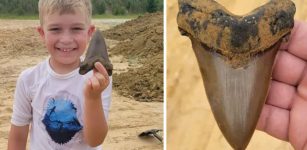 Young Boy Finds A Huge Tooth From A Prehistoric Shark In South Carolina
Archaeology | Sep 3, 2022
Young Boy Finds A Huge Tooth From A Prehistoric Shark In South Carolina
Archaeology | Sep 3, 2022 -
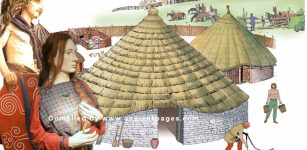 Celts: Facts And History About The Powerful And Intriguing People Of Central And Northern Europe
Civilizations | Aug 7, 2022
Celts: Facts And History About The Powerful And Intriguing People Of Central And Northern Europe
Civilizations | Aug 7, 2022 -
 What Is A Mural Of Tepoztēcatl, Aztec Rabbit God Of Alcohol Doing In A Mexican Church?
Archaeology | Oct 15, 2022
What Is A Mural Of Tepoztēcatl, Aztec Rabbit God Of Alcohol Doing In A Mexican Church?
Archaeology | Oct 15, 2022 -
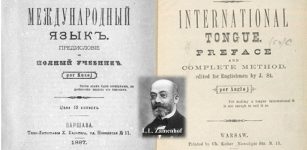 On This Day In History: Unua Libro ‘First Book’ Describing Esperanto Published – On July 26, 1887
News | Jul 26, 2016
On This Day In History: Unua Libro ‘First Book’ Describing Esperanto Published – On July 26, 1887
News | Jul 26, 2016 -
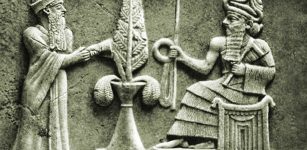 Mighty Enlil Of The Sumerian Pantheon Of Gods
Featured Stories | Feb 22, 2017
Mighty Enlil Of The Sumerian Pantheon Of Gods
Featured Stories | Feb 22, 2017 -
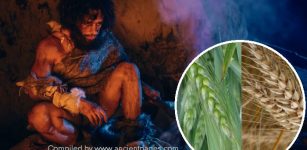 Major Discovery Reveals Neanderthals In Italy Engaged In Plant Food Processing
Evolution | Jun 29, 2023
Major Discovery Reveals Neanderthals In Italy Engaged In Plant Food Processing
Evolution | Jun 29, 2023 -
 What Can New Method Radiocarbon 3.0 Reveal About The Interaction Between Homo Sapiens And Neanderthals?
Archaeology | Mar 29, 2023
What Can New Method Radiocarbon 3.0 Reveal About The Interaction Between Homo Sapiens And Neanderthals?
Archaeology | Mar 29, 2023 -
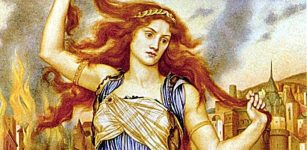 Cassandra: Greek Goddess Who Foretold Cursed Prophecies
Featured Stories | Aug 24, 2016
Cassandra: Greek Goddess Who Foretold Cursed Prophecies
Featured Stories | Aug 24, 2016 -
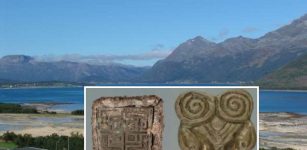 Unexpected Discovery Of Viking Trading Place In Norway Re-Writes History
Archaeology | Jul 22, 2020
Unexpected Discovery Of Viking Trading Place In Norway Re-Writes History
Archaeology | Jul 22, 2020 -
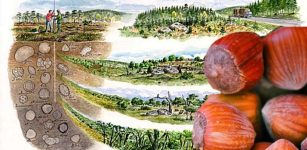 Hazelnuts -‘Time Capsule’ To Reconstruct Landscape Of Ancient Forests In Sweden
Archaeology | Mar 5, 2024
Hazelnuts -‘Time Capsule’ To Reconstruct Landscape Of Ancient Forests In Sweden
Archaeology | Mar 5, 2024

